
The Royal Roads Military College Band was the college military marching band for the Royal Roads Military College in Hatley Park, near Victoria, British Columbia, Canada. It was formed in 1975 after the college was 35 years old.

The Royal Roads Military College Band was the college military marching band for the Royal Roads Military College in Hatley Park, near Victoria, British Columbia, Canada. It was formed in 1975 after the college was 35 years old.
In 1955, the then 15 year old RRMC had a drum and bugle corps. During its existence it had performed at limited occasions, slowly evolving from a purely percussionist group. [1] Twenty years later, a full brass and reed band was formed. By the end of the bugle band's existence, it was mostly composed of cadets from No.3 Squadron. [2] Warrant Officer George Dunn became the college's first full-time Bandmaster, serving from 1975 to 1979. During his tenure, he obtained the equipment needed to create a Pipe Band which was attached to the brass and reed band. The band was authorized to form a 15-member voluntary Pipe Band (consisting of 10 Pipers and 5 Drummers) on 12 January 1978. The Ex-Cadet Club provided the kilts that same year and gave the band feather bonnets in 1980. [3] The band was part of the welcoming honors for the Royal Visit of Queen Elizabeth II to the province in 1983, with the then bandmaster composing a slow march titled Dunsmuir Castle, arranged for the massed bands of the RRMC. It was named after coal magnate James Dunsmuir. Since the MacKenzie tartan was initially adopted by Royal Military College of Canada (the senior military college), it became the tartan for all military college pipe bands including the one at RRMC. In 1990, a request to the National Defence Headquarters in Ottawa to adopt the Clan Murray tartan, was endorsed and was unveiled a year later in time for the graduation parade.
The bands performed traditional military, pop, modern and highland music, as well as a few jazz and contemporary numbers. The repertoire of the band followed the following formula:
The Pipes and Drums performed at military parades, public relations trips and recruit shows. The Pipe Section and the Drum Section also performed at mess dinners; parades; sporting events; ceremonies (official or squadron); funerals; wing events; Christmas and Graduation Balls; private events; and holidays. The 50th anniversary year of the RRMC in 1990 was one of the busiest years for the band in terms of the number of activities the band did. [5] The band, augmented by Highland Dancers at the Sunset Ceremony, took an active part in the Sunset Ceremony and Graduation Parade during the 50th Anniversary celebration in 1990. [3]
The following is a list of Drum Majors of the RRMC Band in order of appointment:
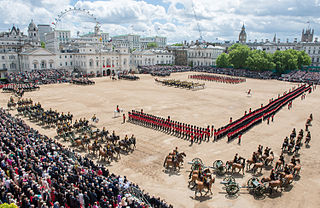
Trooping the Colour is a ceremony performed every year in London, United Kingdom, by regiments of the British Army. Similar events are held in other countries of the Commonwealth. Trooping the Colour has been a tradition of British infantry regiments since the 17th century, and since 1748 has marked the official birthday of the British sovereign, although its roots go back much earlier.
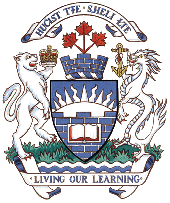
Royal Roads University is a public university with its main campus in Colwood, British Columbia. It is located at Hatley Park National Historic Site on Vancouver Island. Following the decommissioning of Royal Roads Military College in 1995, the government of British Columbia created Royal Roads University as a public university with an applied and professional degree-granting focus. The university considers alumni of RRMC to be part of its broader alumni community.
Royal Roads Military College (RRMC) was a Canadian military college from 1940 to 1995, located in Hatley Park, Colwood, British Columbia, near Victoria, British Columbia, Canada.

Beating Retreat is a military ceremony dating to 17th-century England and was first used to recall nearby patrolling units to their castle.

United States military bands include musical ensembles maintained by the United States Army, United States Marine Corps, United States Navy, United States Air Force, and United States Coast Guard. More broadly, they can also include musical ensembles of other federal and state uniformed services, including the Public Health Service and NOAA Corps, the state defense forces, and the senior military colleges.
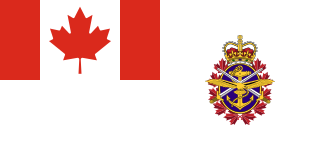
The following is a list of the notable authorized marches for various organisations of the Canadian Armed Forces. The first march listed is the march most commonly performed for that organisation on parade; it is commonly referred to simply as that organisation's "march" or "march past". In addition, many organisations also have additional pieces for slow marches, marches for mounted parades, pipe marches, etc.; they are subsequently listed and footnoted as applicable.

Hatley Park National Historic Site is located in Colwood, British Columbia, in Greater Victoria. It is the site of Hatley Castle, a Classified Federal Heritage Building. Since 1995, the mansion and estate have been used for the public Royal Roads University. From the 1940s to 1995, it was used for the Royal Roads Military College, a naval training facility.
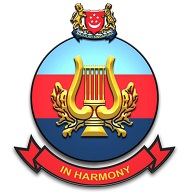
The Singapore Armed Forces Band form the musical arm of the Singapore Armed Forces. Consisting of the SAF Central Band and the SAF Ceremonial Band, the SAF Band provides musical support for key events such as the National Day Parade, SAF Day Parade, Passing Out Parades, Change of Command Parades and other military duties. Other than discharging ceremonial duties, the SAF Band also presents public concerts that aim to bring a wide range of music to the populace. They also seek to build up the band's music repertoire into an extensive array of styles and variety.

The uniforms of the United States Air Force are the standardized military uniforms worn by airmen of the United States Air Force to distinguish themselves from the other services.
The New York Maritime Regimental Pipe & Drum Corps is a pipe band made up of officers and cadets of the SUNY Maritime College located in Fort Schuyler, New York. New York Maritime is one of only two pipe bands representing the United States Merchant Marine, the other being the Maine Maritime Pipe & Drum Corps.

The Regimental Pipes and Drums of The Calgary Highlanders is an authorized volunteer pipe band associated with The Calgary Highlanders of the Canadian Forces. For many years, the band was a bona fide, and separate, military unit unto itself, with a separate Unit Identification Code within the CF. Today, the band has been reduced to volunteer status but officially maintains an establishment of eight paid military musicians on its rolls. The band has had mixed success in competitions, but under the direction of Pipe Major Michael Giles had become successful in the Grade Three circuit in Alberta in the years leading up to the regimental centennial in 2010. The band published a recording to commemorate the 80th anniversary of the Regiment in 1990, titled Eighty Years of Glory and commemorated its centennial in 2010 by releasing a second CD entitled Onward.
The Regimental Band and Pipes was founded on The Citadel campus in Charleston, South Carolina in 1909 with late marine general, Harry K. Pickett, in command. The marching band makes up one of the twenty-one companies of the South Carolina Corps of Cadets. In 1991, the band participated in the Edinburgh Military Tattoo in Edinburgh, Scotland becoming the first military college selected for the honor. They returned in 2010 as the only unit from the United States to appear at the Silver Jubilee of the Tattoo and appeared again in 2015.

The Royal Military College of Canada Bands is the official group of bands of the Royal Military College of Canada. The group is composed of four sections: the brass and reed, the pipes and drums, highland dancers, and choristers. Total band membership consists of 105 Officer Cadets from the college. Officer Cadets in the band practice three days a week in the morning on top of attending their individual full-time university programs.

Canadian military bands are a group of personnel in the Canadian Armed Forces (CAF) that performs musical duties for military functions. Military bands form a part of the Music Branch of the CAF, composed of six full-time professional Regular Force bands, 15 Regular Force voluntary bands, and 53 part-time reserve force bands. Bands of the Music Branch are often badged with the unit or Canadian Forces base insignia that they support.

The Indian military bands consists of musicians from the Indian Army, Navy and Air Force. Indian military bands regularly participate in international festivals and take part in celebrations dedicated to various national events. These bands are permanent participants in the Delhi Republic Day parade on the Rajpath. Today, the Indian Armed Forces have more than 50 military brass bands and 400 pipe bands and corps of drums. A Tri-Services Band refers to a joint Indian Armed Forces military band that performs together as a unit. At the Spasskaya Tower Military Music Festival and Tattoo in Moscow, the band consisted of 7 officers and 55 musicians. The Military Music Wing of the Army Education Corps is the principal educational institution of the armed forces that provides instruction to musicians of all ranks. Instruction is also provided by the Military Music Training Center and the Indian Navy School of Music.
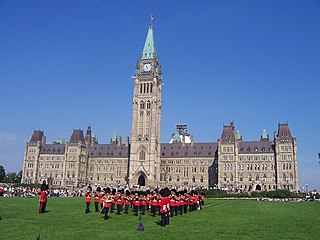
The Band of the Ceremonial Guard is an ad hoc military band that is attached to the Canadian Forces Ceremonial Guard in Ottawa. All members of the band are fully trained members of the Canadian Armed Forces (CAF) and consists of personnel principally from the two Foot Guards regiments and has even since 2007 been manned by a pan–Canadian Forces approach that is inclusive to musicians from the Royal Canadian Navy, Canadian Army and Royal Canadian Air Force. The band forms a separate company within the CG and rely on the Headquarters Company for administration and support personnel. In full composition, the band is active from April to August.

The United States Naval Academy Pipes and Drums is a highland musical cadet unit of the United States Naval Academy (USNA). Currently, the 42-member military pipe band is the only active duty unit of its kind in any service of the Department of the Navy. The band group provides musical support to the academy's Brigade of Midshipmen as well as the larger city of Annapolis, Maryland. It is one of several service academies to maintain bagpipe bands, alsonside the West Point Pipes and Drums and the Virginia Military Institute Pipes and Drums. The USNA Pipe Band is one of the more recent of these types of bands, being established in 1996 with funding being provided by members of the Annapolis class of 1961. It was officially approved as a Brigade Support Activity (BSA) three years later.

Navy bands in Canada are part of the Royal Canadian Navy's command structure and overseen by the Music Branch of the Canadian Forces and the Directorate of History and Heritage of the Department of National Defence.

The military bands of the United Kingdom are musical units that serve for protocol and ceremonial duties as part of the British Armed Forces. They have been the basis and inspiration for many military bands in the former British Empire and the larger Commonwealth of Nations as well as musical organizations in other countries. Military musical units with British influence include United States military bands, the Japan Ground Self-Defense Force Music Corps and the Military Band of Athens. British military bands are controlled by the military music departments of the three services that compose the armed forces. These include the Royal Marines Band Service, the Royal Corps of Army Music, and the Royal Air Force Music Services. British style brass bands and carnival bands were then and are currently inspired by the British Armed Forces and its brass bands, especially of the Army's regular and reserve formations, as they follow a similar format as it relates to brass and percussion instruments.